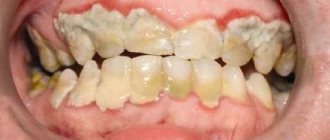Hydatidiform mole - what is it?
Having heard a disappointing conclusion from the doctor, the woman tries to find out on her own what a hydatidiform mole is and why this disorder is dangerous. This pathology in obstetrics usually refers to a disease of the fetal egg, in which the chorionic villi degenerate into small bubbles with liquid. The process is accompanied by the proliferation of epithelial tissue. Pathology can be diagnosed by ultrasound examination and characteristic symptoms.
The pathological process can have varying degrees of prevalence, therefore, to facilitate diagnosis and correctly prescribe therapy, doctors use the classification of hydatidiform mole. Thus, it is customary to distinguish the following types of pathology:
- incomplete;
- full;
- simple;
- proliferating mole.
Incomplete hydatidiform mole
Partial hydatidiform mole is essentially a triploid disorder. During its development, using microscopic analysis, doctors can detect 1 maternal chromosome and 2 paternal chromosomes. This happens when an egg is simultaneously fertilized by two sperm. With the further development of pregnancy, areas of normal placenta and embryonic tissue may be found in the uterus. Moreover, the embryo itself is often severely deformed and nonviable.
Incomplete hydatidiform mole has variable development time. Pathology is most often diagnosed at 9–34 weeks of gestation. Clinically, it can be manifested by a discrepancy between the size of the reproductive organ and the current stage of pregnancy. To accurately determine the disease, an ultrasound is prescribed, which can identify all the changes occurring in the embryo at this time.
Complete hydatidiform mole
Complete hydatidiform mole in the early stages is a simultaneous lesion of the entire volume of villous structures of the chorion. With this type of disorder, signs of embryo development are completely absent, and on the ultrasound monitor screen the doctor visualizes numerous bubbles along with edematous chorionic villi. According to the observations of doctors, the pathology undergoes degeneration into a malignant disorder in 20% of cases. As in the case of partial hydatidiform mole, complete mole cannot be treated and requires termination of pregnancy followed by cleaning of the uterine cavity.
Simple hydatidiform mole
A simple hydatidiform mole is a pathology in which the swelling of the chorionic villi is so pronounced that they merge into a single whole. Microscopic examination reveals large chorionic villi. They are often swollen and located directly inside the uterine cavity. In terms of its external features, a simple mole is very similar to a complete mole, which is why doctors often equate these two terms.
Proliferating hydatidiform mole
This invasive hydatidiform mole is characterized by profound abnormalities. During its development, the uterine myometrium grows deeper. As a result, a destructive process begins that requires medical attention. This form of pathology is accompanied by frequent bleeding, which can threaten the life of a pregnant woman. If pathology is detected at a late stage, the only treatment option is removal of the uterus.
Stages and signs of the disease
Hydatidiform mole during pregnancy has several varieties, shown in the photo:
- complete hydatidiform mole (usual) – represents pathological changes on the entire chorion;
- partial hydatidiform mole - changes affect only a certain part of the chorion;
- destructive hydatidiform mole - modified villi penetrate the walls of the uterus. This is the most severe form of this disease, as it can lead to the development of dangerous intra-abdominal and external bleeding, and the tumor becomes malignant.
Loss of maternal genes and duplication of paternal chromosomes occurs
A complete hydatidiform mole is characterized by the development of an “interesting situation” at the beginning, within three months. Normal conception involves the presence of 23 paternal and 23 maternal chromosomes in the egg. If a complete hydatidiform mole is observed, the fertilized egg contains only the paternal chromosomes and no maternal ones. Since duplication of paternal chromosomes occurs, the egg includes 2 sets of them. As a result, the formation of an embryo does not occur, and natural placental tissue and a fertilized bladder are absent.
Partial hydatidiform mole implies triploidity; in other words, the cells contain 69 chromosomes. The additional set is characterized by paternal origin.
A fetus with this form of pathology also has signs of triplodia: intrauterine retardation, as well as various developmental abnormalities, for example, hydrocephalus and syndactyly.
Incomplete hydatidiform mole occurs when the fertilized egg has 23 maternal chromosomes and a double set of paternal chromosomes. This pathology occurs when an egg is fertilized by two sperm at once. For this reason, natural placental tissue and a cystic placental structure are formed. After prescribing the correct treatment and constant medical supervision, the development of any abnormalities associated with trophoblastic disease is unlikely.
Characteristic signs of pathology are:
- Bleeding caused by separation of the placenta from the decidua.
- Increased size of the uterus caused by accumulation of blood and chorion growth.
- Preeclampsia (sometimes eclampsia), which is accompanied by an increase in the size of the uterus.
- HCG levels during hydatidiform mole are very high.
- Vomiting in women bearing a child, which is caused by complex disturbances of water and electrolyte balance.
- Embolism of parts of the pulmonary artery.
- Very rarely - thyrotoxicosis, which is accompanied by tremor, tachycardia, high body temperature and wetness of the skin.
- Thecallutein ovarian cyst, caused by high levels of ovarian stimulating hormones, disappears on its own after a few months.
Hydatidiform mole - causes
The reasons for the development of pathology are different and depend on the type of disorder. Thus, a complete hydatidiform mole during pregnancy develops with uniparental disomy - the embryo does not receive a maternal set of genes, but gets two from the father at once. In some cases, this hydatidiform mole may be caused by the fertilization of an anucleated egg by two sperm at the same time. As a result, the fetus dies at an early stage of its development.
An incomplete pregnancy develops when an egg is fertilized by two sperm, and the set of maternal chromosomes is delayed. As a result, at one of the stages of division, the embryo receives one set of maternal and double sets of paternal genes. After a short time, the embryo dies. Among the factors contributing to the development of these disorders, doctors name:
- the age of the expectant mother is less than 20 and more than 35 years;
- a history of hydatidiform mole;
- early miscarriage in the past;
- severe deficiency in the diet of vitamin A.
Hydatidiform mole - symptoms
During gestation, pathology can be assumed by the presence of characteristic symptoms. Doctors call one of the first signs the discharge of liquid dark blood from the genital tract, which contains expelled blisters. Discharge during hydatidiform mole is always abundant and prolonged, which can lead to the development of anemia, becoming threatening to the health and life of the pregnant woman.
In the invasive form of the disease, bubbles grow into the thickness of the myometrium, resulting in a risk of uterine perforation and intra-abdominal bleeding. There are other manifestations by which hydatidiform mole can be identified - the symptoms in the early stages of this disorder are as follows:
1. Severe manifestations of toxicosis:
- nausea;
- excessive vomiting;
- salivation;
- exhaustion.
2. Increasing liver failure.
3. Lack of reliable signs of the gestation process:
- the baby’s heart sounds are not audible during an ultrasound;
- parts of the embryo's body are not found in the fertilized egg.
Forecast
The prognosis for timely and adequate treatment of TB is favorable. Chemotherapy in patients with a non-metastatic form leads to a 100% cure, and in patients with a metastatic pathology, cure occurs in 70% of cases. TB relapses are possible in 4–8% of cases.
Sozinova Anna Vladimirovna, obstetrician-gynecologist
5, total, today
( 41 votes, average: 4.34 out of 5)
Intrauterine fetal hypoxia
Eclampsia and preeclampsia in pregnant women: causes, risks and emergency care
Related Posts
Diagnosis of hydatidiform mole
The diagnosis of “hydatidiform mole” is made based on the results of the studies. Initially, the doctor examines the woman in a gynecological chair. When performing this procedure, the gynecologist determines the densely elastic consistency of the uterus, in which there are areas of excessive softening. At the same time, the actual dimensions of the organ in practice exceed those that should be expected.
After an examination in a chair, if there is a suspicion of pathology, the doctor prescribes instrumental diagnostic methods:
- analysis of the level of hCG in the circulating blood;
- Ultrasound.
When diagnosing, a pathology such as hydatidiform mole is differentiated from phenomena with similar clinical manifestations:
- multiple births;
- polyhydramnios;
- pregnancy due to uterine fibroids;
- spontaneous abortion.
In order to completely exclude metastatic screenings of hydatidiform moles, doctors may prescribe additional examinations:
- chest x-ray;
- abdominal examination;
- CT;
- MRI of the brain.
Hydatidiform mole – hCG
The hCG level during hydatidiform mole is one of the indicators of the disorder. With this pathology, there is a sharp increase in the concentration of the hormone in the bloodstream. On average, it exceeds 10,0000 mmU/ml. The simultaneous increase in the size of the reproductive organ, which does not correspond to the period, prompts gynecologists to think that this may be a sign of a hydatidiform mole (hydatidiform mole).
Hydatidiform mole - ultrasound
We can detect hydatidiform mole on ultrasound in the early stages of the pathology. To confirm their assumptions, doctors conduct it immediately after receiving the result of the hCG test. Among the obvious manifestations of the disorder, doctors note the following signs of hydatidiform mole, observed on the ultrasound monitor screen:
- enlarged uterus with no fetus in it;
- homogeneous small cystic tissue (blizzard symptom);
- the presence of thecal lutein cysts in the ovaries, the diameter of which is more than 6 cm.
Clinical picture
At the earliest stages of embryo development (up to 4-12 weeks), it is almost impossible to suspect pathology. At the same time, a fairly clear clinical picture may appear, on the basis of which, however, a final diagnosis cannot be made.
The development of a molar pregnancy can be suspected when the following symptoms appear:
- uterine bleeding, which is characterized by bright, rich red-brown pathological discharge from the genital tract, sometimes upon closer examination of which, you can notice chorionic villi, shaped like grape bunches. If we are talking about an invasive form, massive intra-abdominal bleeding may develop;
- increased size of the uterus that does not correspond to the gestational age due to the active proliferation of cysts;
- absence of fetal heartbeat during ultrasound;
- nonspecific signs that are similar to the manifestation of classic toxicosis, but many times stronger: nausea, vomiting, salivation, debilitating weakness, preeclampsia, as well as eclampsia (edema, increased levels of protein in the urine, arterial hypertension);
- arterial hypertension;
- anemia.
Due to the fact that the fetus dies in the early stages of formation and development, during a gynecological examination the doctor is not always able to feel the fertilized egg. In addition, an ultrasound photo may also not answer the question of a possible pregnancy.
Hydatidiform mole - treatment
Treatment of hydatidiform mole is aimed at preventing possible complications and preserving the woman’s life. Pregnancy with such a disorder requires urgent termination. In some cases, the body independently cleanses the uterine cavity of a large number of bubbles, which come out along with bloody discharge. If this does not happen, surgery is prescribed.
It is performed under general anesthesia. If possible, doctors choose the laparoscopic method. To completely cleanse the uterine cavity from the existing embryonic membranes, curettage using a curette is used. Doctors often use vacuum aspiration to exclude the presence of residual material. In this way, complications can be prevented.
Removing a hydatidiform mole
Hydatidiform mole in the uterus can be removed in several ways. The choice of the type of surgical intervention is determined by the type of disorder, its stage, and the severity of the pathological process. For treatment, doctors use the following methods:
- Dilation and curettage.
It involves preliminary stretching of the cervix to ensure full access to the uterine cavity and removal of all the contents of the reproductive organ. This method is used for a partial form of the disorder. - Hysterectomy is the complete removal of the uterus with all its contents.
This method is used in cases of complete enlargement, expressed by the growth of chorionic villi into the deep layers of the organ. The ovaries cannot be removed during this operation.
Hydatidiform mole - treatment after curettage
In order not to cause complications that can be caused by hydatidiform mole, after cleaning the uterine cavity, the woman is monitored dynamically. A few days after the operation, an hCG test is prescribed, which is carried out twice, with an interval of 7 days. The result of therapy is satisfactory if 2 negative test results are obtained. The woman is also prescribed a physical examination of the pelvic organs, which is carried out every 2 weeks for 3 months.
Therapy methods
When the disorder is diagnosed in the first trimester, treatment is performed surgically. As a rule, at this stage the finger technique is used. When diagnosing the disorder late, the vacuum aspiration technique is used. Treatment of chorionepithelioma in this way is possible for up to 20 weeks.
If a woman is diagnosed with a distributing form, then after surgical removal it is necessary to undergo a course of chemotherapy. In addition, it is necessary to regularly monitor your condition using ultrasound and a blood test for hCG.
Hydatidiform mole - consequences
The consequences of hydatidiform mole can negatively affect the condition of the female reproductive system and health in general. A threatening complication of this disorder is the formation of chorionepithelioma (chorionic carcinoma) - a malignant form of trophoblast disease. It is characterized by invasive growths of the uterus, numerous metastases of areas of affected tissue to the lungs, liver, and brain. Often the pathology leads to death.
Among other consequences of hydatidiform mole, it is necessary to highlight:
- intrauterine infections;
- metrothrombophlebitis;
- thrombosis;
- amenorrhea;
- infertility.
Pregnancy after hydatidiform mole
The chances of re-conception are not affected in any way by a previous hydatidiform mole, and pregnancy after the disorder is possible. The exception is those cases when the uterus is removed due to severe destructive changes. Doctors advise not to start planning your next pregnancy immediately after a miscarriage. The recovery period lasts at least six months. During this period, hormonal medications may be prescribed. It is better to use barrier methods (condoms) as contraceptives.











